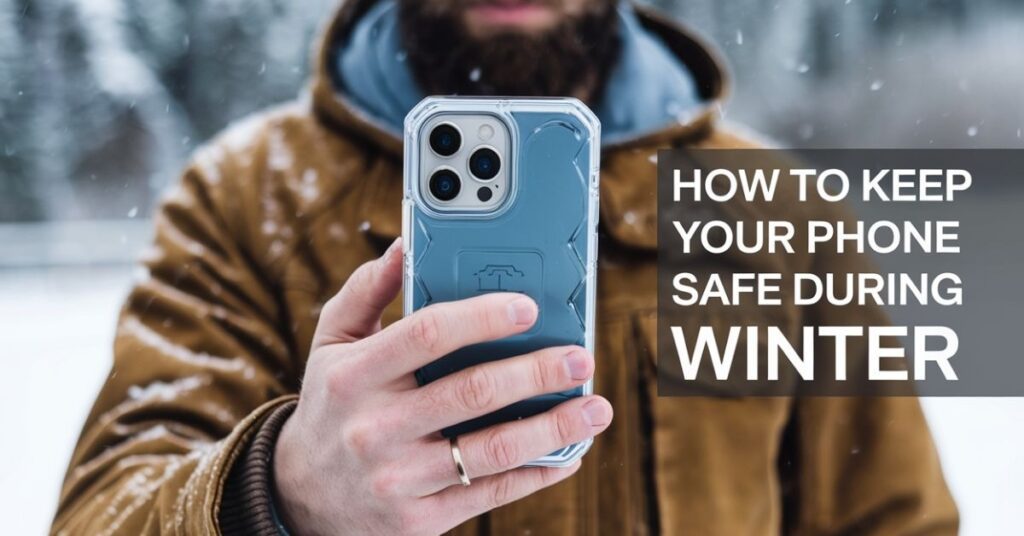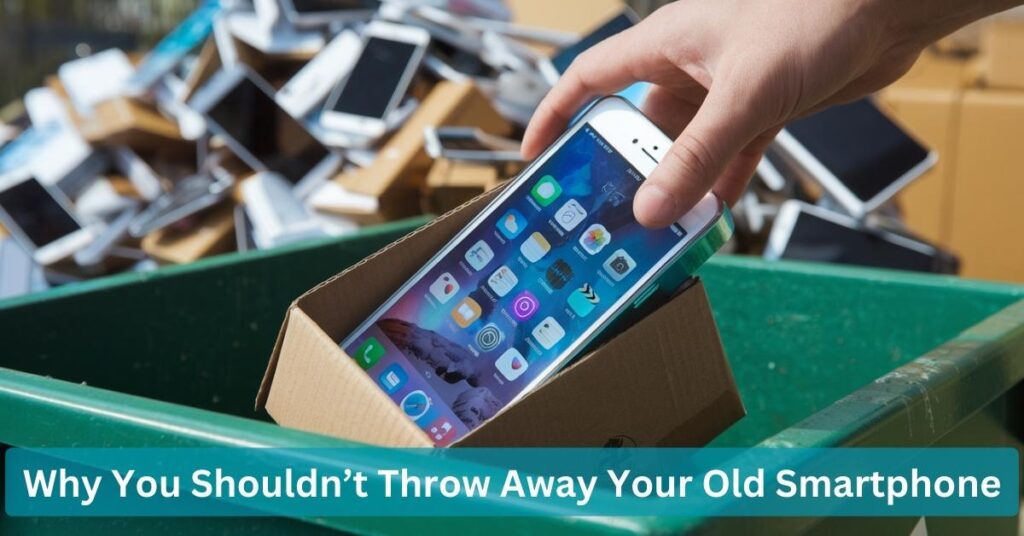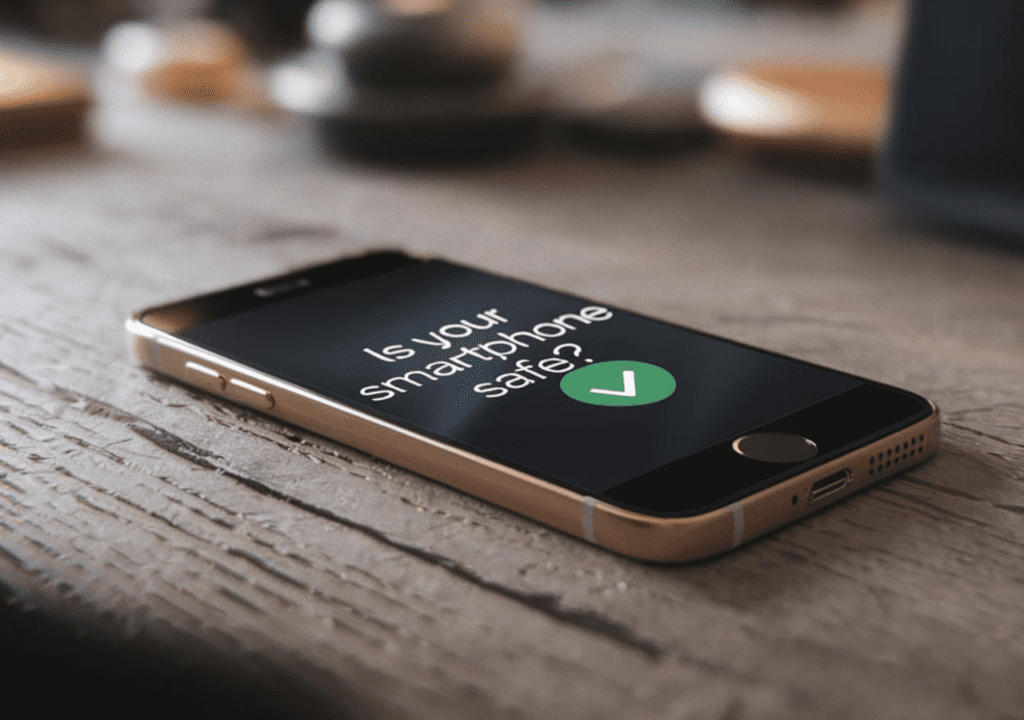Winter can be harsh on your phone, with freezing temperatures affecting its performance and lifespan. Extreme cold can drain your battery quickly, slow down your device, and even cause permanent damage to internal components. Taking a few simple precautions can help you protect your phone from the winter chill and keep it functioning smoothly.
To start, always keep your phone warm by storing it in a pocket close to your body or in a padded case. Avoid exposing it to freezing air for long periods, especially when you’re outside. If your phone does get cold, let it warm up gradually indoors before using it to avoid internal condensation. By following these tips, you can ensure your phone stays safe and reliable throughout the winter months.
Understanding the Risks
Winter conditions can pose several risks to your phone, impacting its performance and durability. Low temperatures can drain your phone’s battery much faster than usual. This happens because cold weather slows down the chemical reactions inside lithium-ion batteries, making them lose charge quickly or even shut down temporarily. Keeping your phone warm can help prevent this issue.
Freezing temperatures can also affect your phone’s touchscreen sensitivity. The screen may become unresponsive or laggy, making it harder to use. Additionally, condensation can form inside your phone when you move between cold and warm environments, which increases the risk of water damage. Using protective accessories like a weatherproof case can help shield your phone from moisture.
Finally, sudden temperature changes can cause stress on your phone’s internal components, leading to potential cracks in the screen or damage to sensitive parts. To avoid this, allow your phone to gradually adjust to new temperatures by keeping it in a pocket or bag when moving between environments. Understanding these risks will help you take steps to keep your phone safe during winter.
Protective Measures
Keeping your phone safe during winter starts with the right protective gear. A weatherproof case is essential for shielding your phone from snow, moisture, and freezing winds. These cases are designed to provide extra insulation, keeping your device safe from the elements. Look for options that are durable and offer a snug fit to prevent water or snow from seeping in.
Adding a tempered glass screen protector is another smart move. It not only prevents scratches but also offers extra protection against cracks caused by sudden temperature changes or accidental drops. A screen protector acts as a barrier, helping your phone withstand harsh winter conditions while maintaining touchscreen responsiveness.
Lastly, avoid exposing your phone directly to cold temperatures for extended periods. Instead of holding it out in the open, keep your phone in a pocket close to your body or inside a bag. This keeps it insulated and prevents freezing damage. By taking these simple yet effective precautions, you can ensure your phone stays safe and functional all winter long.
Battery Care During Winter
Cold weather can quickly drain your phone’s battery, so keeping it warm is essential. Store your phone in an inner pocket close to your body when outdoors to protect it from freezing temperatures. Avoid leaving your phone in cars or other cold environments for long periods, as extreme cold can damage the battery permanently.
When charging your phone in low temperatures, avoid plugging it in immediately after coming in from the cold. Let the device warm up to room temperature first. Charging a cold battery can lead to reduced performance or even long-term damage. Additionally, use original chargers or high-quality alternatives to ensure safe and efficient charging during winter.
Be on the lookout for signs of battery damage. If your phone’s battery drains unusually fast, shuts down randomly, or shows a swollen appearance, these could be signs of winter-related issues. In such cases, seek professional help to prevent further damage. Taking these steps will help you maintain your phone’s battery health during the colder months.
Preventing Screen Damage
Using your phone’s touchscreen in the cold can be tricky, as freezing temperatures can make the screen less responsive. To avoid damaging the screen, try to keep your phone warm by storing it in a pocket or insulated case when not in use. If you need to use it outdoors, try to limit exposure to the cold and avoid leaving it in direct contact with snow or ice.
If you must use your phone in the cold, consider wearing gloves designed for smartphone use. These gloves have special conductive material in the fingertips, allowing you to use your touchscreen without exposing your hands to the cold. This simple solution can help prevent freezing and potential damage to both your phone’s screen and your hands.
By taking these precautions, you can keep your phone’s screen functioning properly and avoid costly repairs caused by cold weather exposure.
Avoiding Moisture and Condensation
When moving between cold and warm environments, your phone is at risk of condensation forming inside, which can lead to water damage. To avoid this, keep your phone in a pocket or bag when entering a heated space. This allows it to gradually warm up, preventing the buildup of moisture inside the device. Avoid pulling your phone out immediately when going indoors from the cold to give it time to adjust.
Using anti-moisture accessories can further protect your phone from humidity. Moisture-absorbing pouches, like silica gel packs, can help keep your phone dry during winter. You can also consider using a waterproof case to offer extra protection from rain, snow, or accidental spills. These accessories act as a barrier, helping to keep moisture away from your device, especially when you’re on the go.
Taking these simple precautions will help ensure your phone stays dry and functioning well throughout the winter months.
Practical Tips for Outdoor Use
When using your phone outdoors in winter, proper storage and carrying methods are key to protecting it from the cold. Always keep your phone in an insulated pocket or bag to prevent it from freezing. Pockets close to your body are ideal since your body heat will help keep your phone warm. Avoid leaving it exposed in cold air for long periods, as this can drain the battery and cause screen issues.
If you need to use your phone in severe weather, try to limit exposure to the cold and only take it out when absolutely necessary. If you must use it for a short period, be sure to hold it in a way that minimizes contact with snow or ice. In very cold conditions, it’s also a good idea to protect your phone with a weatherproof case to shield it from snow, rain, or wind.
By following these practical tips, you can help your phone perform better and stay safe while you’re outdoors in harsh winter conditions.
Maintaining Performance and Longevity
To keep your phone running smoothly during winter, regular cleaning is essential. Cold weather can cause dirt, snow, and debris to build up on your phone, especially around the ports and buttons. Use a soft cloth to gently wipe down the surface, and make sure to clean around the charging port and speakers to prevent any blockages. Keeping your phone clean helps maintain its performance and prevents long-term damage.
It’s also important to monitor your phone’s app and system performance in winter. Cold temperatures can sometimes cause apps to freeze or crash. If you notice any slowdowns or issues, try restarting your phone to give it a fresh start. Be mindful of apps running in the background, as they can drain your battery more quickly in the cold. Regularly check for software updates, as manufacturers often release fixes that can improve your phone’s performance in winter conditions.
By maintaining a clean device and keeping an eye on its performance, you can extend the life of your phone and ensure it stays in good working condition throughout the colder months.
What to Do If Your Phone Is Damaged by Winter Conditions
If your phone’s screen freezes in cold weather, it may become unresponsive. The first step is to turn it off immediately to prevent further damage. Let your phone gradually warm up to room temperature by placing it in a dry, warm area. Avoid using a heater or direct heat, as this can cause internal damage. Once it has warmed up, try turning it back on.
If your phone has been exposed to moisture or condensation, you’ll need to dry it out as soon as possible. Remove the battery (if removable) and SIM card, then gently wipe the phone with a dry cloth. Place the phone in a container with silica gel or uncooked rice for 24-48 hours to absorb the moisture. Avoid using a hairdryer or oven, as this could damage the phone further.
If these steps don’t resolve the issue, or if you notice signs of deeper damage, it’s time to seek professional repair. Water or freezing damage can sometimes cause long-term problems that require expert attention. Taking your phone to a technician early can prevent further damage and may save you from needing a full replacement.
Conclusion
Keeping your phone safe during winter requires a few simple but effective precautions. By using a weatherproof case, investing in a screen protector, and ensuring your phone stays warm, you can prevent many of the common issues caused by cold temperatures, such as battery drain and screen damage. Storing your phone in insulated pockets and using gloves designed for touchscreen use can also help protect it from harsh weather.
Regularly cleaning your device, monitoring its performance, and being mindful of moisture and condensation are additional steps to ensure your phone stays in good condition throughout the winter. If your phone does get damaged, quick action can prevent further harm. By following these tips, you’ll be able to extend the life of your phone and keep it functioning well, even in the coldest months.
FAQS
Can the cold damage your phone?
Yes, cold weather can damage your phone by draining the battery faster, making the screen less responsive, and causing internal condensation. Prolonged exposure to freezing temperatures may also harm internal components, so using a weatherproof case and keeping your phone in a warm pocket can help prevent damage.
Can cold permanently damage a battery?
Yes, extremely cold temperatures can permanently damage your phone’s battery. The cold slows down chemical reactions inside lithium-ion batteries, which can lead to reduced capacity over time. Protect your battery by keeping your phone warm and avoiding charging it when it’s cold.
Does temperature affect phone battery?
Yes, temperature has a significant impact on your phone’s battery. Cold weather can cause rapid battery drain, while extreme heat can reduce battery life. To maintain battery health, keep your phone within its recommended temperature range and avoid exposing it to harsh conditions.
How do I keep my phone warm in cold weather?
To keep your phone warm in cold weather, store it in an inner pocket close to your body or inside a warm bag. Use an insulated or weatherproof case for extra protection. Avoid exposing your phone to freezing temperatures for long periods, and minimize usage outdoors.



